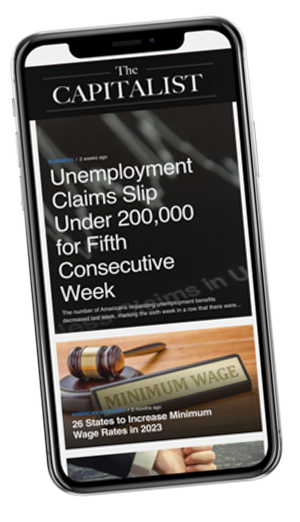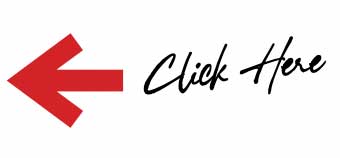401 K
How to Borrow From Your 401K

Since 1979, private sector work-related retirement plans have been gradually shifting from defined benefit pension plans to defined contribution plans. The 401(k) plan is among the most common and best known of this type of retirement plan. Defined contribution plans shift important retirement planning responsibilities from the employer to the employee, according to the U.S. Social Security Administration Office of Retirement and Disability Policy. Those responsibilities come with choices. These decisions are far-reaching in their impact and mistakes have the potential to be costly, so think carefully before borrowing from your 401(k) plan.
Weigh Your Reasons
According to a January 2015 CNN Money report, the average Fidelity 401(k) balance was $91,300. That's a far cry from the $1 million in retirement funds that many financial planning professionals consider adequate. At a 3 to 5 percent annual draw-down, that $1 million will provide $30,000 to $50,000 per year during retirement. Building a retirement fund of that size isn't easy for the average person. It takes work – planning, saving and investing. Taking money out of your retirement savings isn't something you should ever do lightly.
Generally, spending and debt fall into three basic categories – consumptive, productive or obligatory. Consumptive borrowing, spending and debt refers to monies used for consumer goods or services, such as remodeling your home, buying a perfectly restored classic car or taking an extended tour of Europe. Productive debt refers to money borrowed for a practical, productive purpose, such as for an income producing small business. Obligatory borrowing describes the borrowing done to fulfill certain obligations, such as to meet the care needs of an elderly parent.
Borrowing from your 401(k) isn't something the average financial planning professional is likely to encourage in most circumstances and most certainly not for consumptive spending or to pay down debts related to consumption, such as credit card debt. However, there are a few circumstances in which it can be a good financial move, such as for buying a small business or a home, though it is important to keep in mind exactly what you are risking when you take that money out of your 401(k).
Consider the Cost
As with any borrowing option, when deciding whether or not to borrow funds from your 401(k) plan, it is essential to consider the cost of that loan. It is a loan that will have to be paid back with interest, which is typically set at the current prime interest rate plus a couple of percentage points. If the loan isn't paid back according to the agreed upon repayment schedule, you can be subject to a 10 percent penalty and income tax on the amount if you are under 59 years of age, as it will count as an early withdrawal. If you lose your job while you have that loan, you may face that same penalty if you cannot repay the loan in full within 30 to 60 days.
Those are just the overt costs associated with borrowing from your 401(k). There are also hidden costs, as noted in a July 2015 Time article. Money that you take out of your 401(k) plan is money that is no longer working for you. According to data from Fidelity Investments, one loan of $9,000 can put you 7.6 percent behind on your retirement funds. Another way to look at it is that by borrowing from your 401(k), you can decrease your monthly retirement income by $180 to $650. Often, while repaying the loan, additional contributions to the 401(k) aren't made, further reducing the money available for growth in the account. If your plan is one in which your employer matches your contributions, then you suffer a double loss.
Review Other Options
In most cases, you may be better off to consider other options before borrowing from your 401(k) plan. After all, just because you can borrow from your retirement plan, doesn't mean you should. It is better to view your retirement savings as off-limits for all but the most essential needs or dire circumstances. The closer you are to retirement age, the higher the risk that you won't be able to replace those funds, not the cash and what that money would have produced had it been left in your 401(k) plan to grow. Before choosing to borrow from your 401(k), look not just at other borrowing options, but also at other means of achieving your goal, such as taking up part-time work and instituting an aggressive savings plan to come up with the money you need.
If you are tempted to take advantage of the lower interest rate a 401(k) loan offers to pay off your higher interest credit card debt, try negotiating with credit card companies to secure a better interest rate. Medical bills can often be negotiated into a payment plan, as can other expenses and debts. If you are considering borrowing from your 401(k) to cover college costs, invest time in seeking out scholarship potentials and encourage children to work towards them. It may even be a good idea to encourage college-bound children to get a job and help defray some of those college costs. Seek out applicable grant opportunities. And, if all else fails, it may be best to go with the standard student loan opportunities, rather than risk borrowing from your retirement savings.
Sometimes Borrowing Makes Sense
Not every 401(k) plan offers the loan option. The rule for those that do is that you can borrow up to $50,000 or up to 50 percent of the money in the account, whichever is the lesser amount. Typical terms require that the loan is repaid within five years, unless the loan is for the first time purchase of a home. In that case, the repayment period can be as long as ten years. Because of the ease of obtaining the loan and what is often a lower interest rate than other borrowing options, especially true for those with credit score challenges yet to be worked out, there are circumstances in which taking a 401(k) loan does make good financial sense.
A home is an important asset. However, it is also an expensive one, frequently purchased with mortgages that extend for decades. Thus, the interest rate really matters. A few interest points can translate into tens of thousands of dollars over the lifetime of a home loan, making it worthwhile to choose the lower rate of interest typical of a 401(k) loan over loan options with a higher interest rate. Borrowing from your 401(k) plan to beef up a down payment on a house can eliminate the need for mortgage insurance, saving you a significant amount of money monthly. Lowering the principal of the loan can reduce the amount you'll pay in interest over the long-term, yielding great savings over the life of the mortgage.
The quick financial liquidity that a 401(k) loan offers can be a real boon to you if you need funds to invest in your business, perhaps to upgrade equipment or to facilitate expansion, provided you are sure that you'll be able to repay that loan within the proscribed time period. If, however, you are investing in starting a small business and will be relying on profit from that business to help repay the loan, think carefully about that choice. With the high rate of failure for new businesses, it could be a risky move.
Make A Plan
A 2014 Pension Research Council working paper estimated a national annual 401(k) loan default amount of $6 billion. That's a lot of people not repaying t
he loans they take out from their retirement savings. If, after weighing all of the evidence and all of your options, you do decide to borrow from your 401(k) retirement savings, be sure to take the time to craft a solid repayment plan. It's important to be sure that you can repay the loan if you do decide to use this borrowing opportunity.
Sit down and create a budget with the goal of freeing up the cash for your monthly loan payment. If, after cutting out what expenses you can, such as canceling cable television and bringing your lunch to work instead of buying it out, you still find yourself without the money in your budget for your loan payments, you'll have to generate additional income. Whether you take a part-time job, start a micro-business or venture into the sharing economy to make a bit of extra cash monthly, it is important to make sure that you can repay the loan if you do borrow it from your retirement funds.
After Repayment
After paying back the loan, it would be a wise financial move for you to keep that additional income flowing, funneling it directly into your savings account until you've got a good sized emergency fund or just-in-case fund built up. Then, you'll be prepared for the next time you need some liquidity and won't have to consider borrowing from your 401(k) plan, because not borrowing on your retirement really is the best decision in most cases. A 401(k) loan is often the easiest borrowing opportunity, but that doesn't make it your smartest option financially. The future is never sure and borrowing from your retirement really is not the best decision in most cases.





